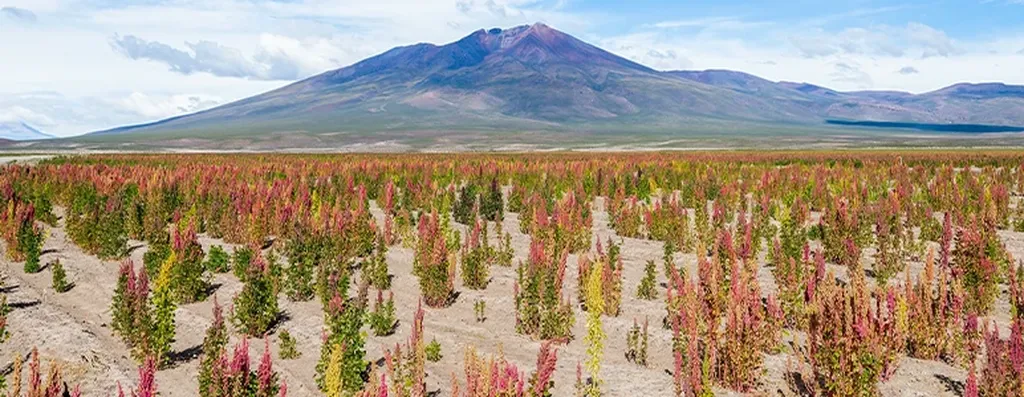In a world grappling with the harsh realities of climate change, agriculture stands as a frontline victim, with extreme weather events chipping away at global food security and costing growers a staggering $170 billion annually in lost production. Amidst this challenge, a team of researchers led by Hongju Sun from the School of Life Sciences at Inner Mongolia University has proposed a compelling alternative to traditional cereals: quinoa. Their findings, published in the journal *Frontiers in Plant Science* (which translates to “Frontiers in Plant Science” in English), suggest that quinoa could be a game-changer in the face of increasingly saline and drought-prone agricultural landscapes.
The study argues that traditional cereal crops, such as wheat and rice, may struggle to adapt to the changing climate without significant genetic modification. “Regaining the lost abiotic stress tolerance can only be achieved using modern gene editing technologies,” Sun explains. However, with public acceptance of such technologies still uncertain, the researchers propose a more immediate solution: the de novo domestication of already tolerant wild species or semi-domesticated “orphan” crops, like quinoa.
Quinoa, a pseudocereal native to the Andean region, has long been celebrated for its nutritional qualities. It is a complete protein, containing all nine essential amino acids, and is naturally gluten-free, making it an excellent alternative for those with celiac disease or gluten sensitivity. But beyond its nutritional benefits, quinoa’s true strength lies in its resilience. It thrives in harsh conditions, including saline and drought-prone environments, making it an ideal candidate for 21st-century agriculture.
The study’s authors emphasize that while quinoa shows great promise, there are still significant gaps in our understanding of the crop. “We need to ensure public acceptance of quinoa in a daily diet, alongside or instead of traditional cereals,” Sun notes. This will require further research into quinoa’s agronomical potential, as well as efforts to educate consumers about its benefits.
The implications of this research extend far beyond the field. As climate change continues to disrupt traditional agricultural practices, the energy sector may also feel the ripple effects. With quinoa’s potential to thrive in harsh conditions, it could become a valuable crop for bioenergy production, providing a sustainable and renewable energy source.
Moreover, the study’s focus on de novo domestication opens up new avenues for agricultural innovation. By turning to wild or semi-domesticated species, researchers may uncover a wealth of untapped potential, leading to a more diverse and resilient global food system.
As we grapple with the challenges of climate change, studies like this one offer a glimmer of hope. By embracing innovative solutions and looking beyond traditional crops, we can pave the way for a more sustainable and secure future. The journey towards a quinoa-centric agriculture may be just beginning, but the potential benefits are already clear. As Sun puts it, “Quinoa could be a viable alternative to traditional cereals from both agronomical and nutritional points of view.” And in a world facing increasingly uncertain climatic conditions, that’s an alternative worth exploring.

